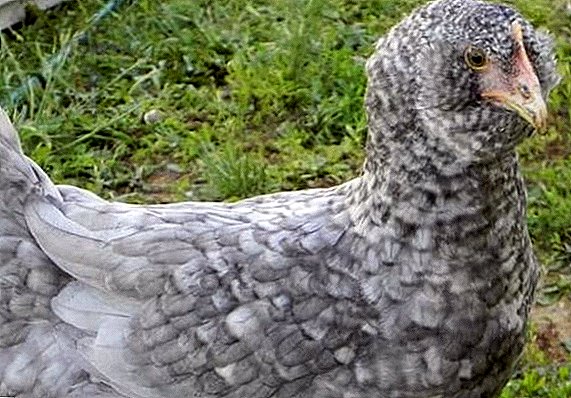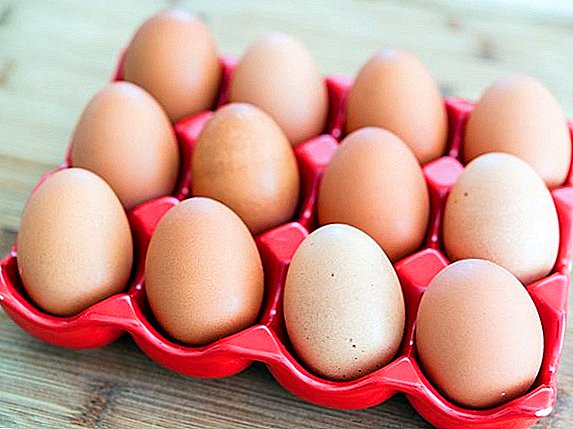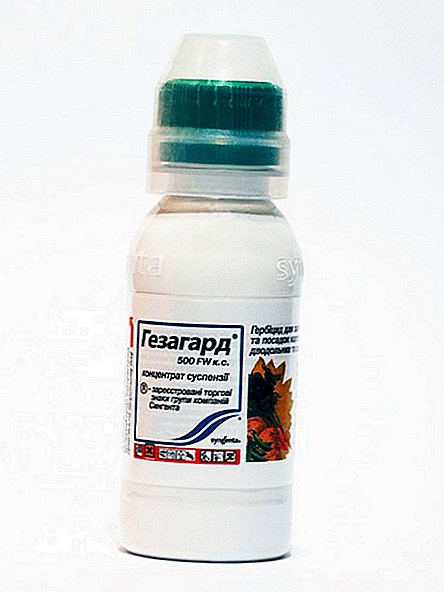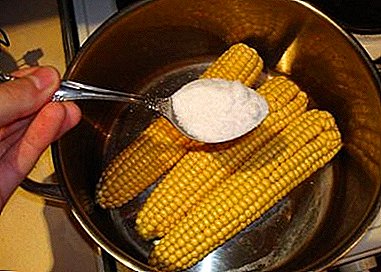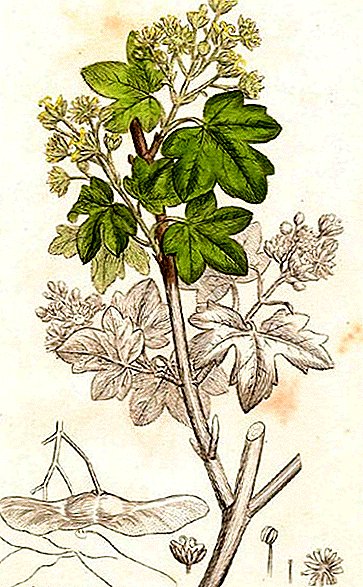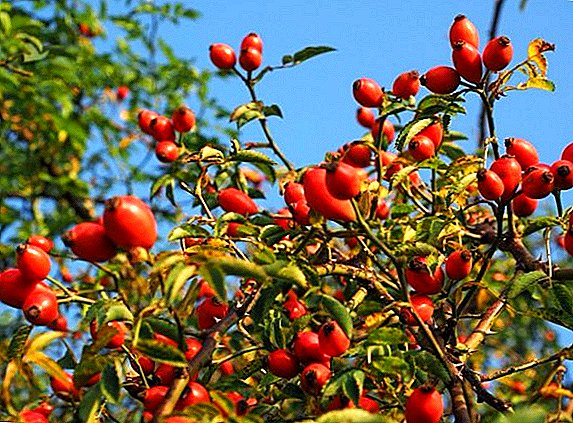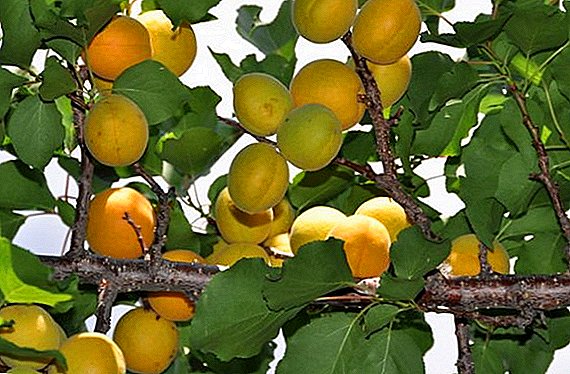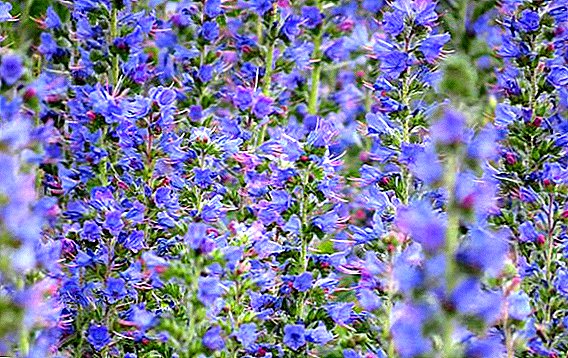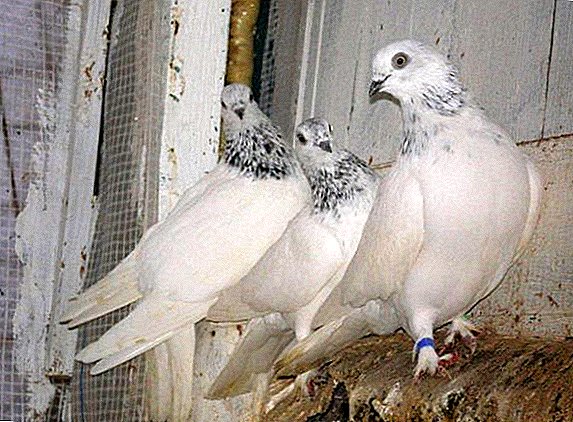 Many farms are engaged in breeding and maintaining purebred pigeons, who attend various exhibitions and competitions. Today you will get acquainted with an interesting breed of Hungarian pigeons and learn about its standards.
Many farms are engaged in breeding and maintaining purebred pigeons, who attend various exhibitions and competitions. Today you will get acquainted with an interesting breed of Hungarian pigeons and learn about its standards.
Consider the conditions of detention and care, as well as tell you about the correct diet for these birds.
History of origin
This is a relatively young breed, the selection of which was officially engaged only in 1941, but many sources indicate that efforts were made at the beginning of the 20th century.
The homeland of the Hungarian high-flying pigeons is the town of Čapel, where Budapest stork pigeons were used as a breeding material.
Important! The breed belongs to the high-flying pigeons, therefore it is often possible to meet this characteristic at the beginning of the name.
Breed description
Birds are distinguished by the absence of intricate forms, a small head, and also a dense, knocked-down body. The eyes against the background of a small head seem huge, and the triangular beak is relatively small.

Exterior:
- head - oval, the line of the forehead is smooth;
- eyes - protuberant, iris colored in dark shades;
- beak - thick, light, pointing down;
- neck - medium length, narrowed to the head and extended to the body;
- chest - muscular, slightly raised, slightly arched, of medium width;
- wings - a standard form, tight to the body, the ends do not converge;
- tail - narrow, medium size, land does not apply;
- feather color - different, most often shades of brown and gray are found, they may have a snow-white color.
Familiarize yourself with the species of high-flying pigeons, forest and wild pigeons, species of stately pigeons, breeds of pigeons, species of pigeons, and the strangest pigeons.
The bird has a strong temperament, as well as an excellent memory, which allows you to memorize the flight route. The pigeon can fly more than 100 km, and then return home. The average time of uninterrupted flight is 8 hours.

Criteria for unprepared pigeons
- Body length more than 45 cm.
- Too long or too short legs.
- Big head.
- Lack of body proportions.
- A noticeable protrusion above the forehead.
- White eye rings.
- Long or too thin beak.
- Iris eyes, painted in different colors.
Did you know? Doves can not lay eggs all alone, and as the company can act another dove, but not the male. In captivity, this feature is bypassed with a mirror.
Content Features
Consider the requirements of the "Hungarians" to the conditions of detention and food.
Dovecote
Pigeons can not be compared with ducks or chickens, as they need more space, as well as a certain distance from the ground. For this reason, the dovecord is equipped in the attic, where the birds have the opportunity to freely get out onto the roof.
 Device for the release of the Hungarian pigeons
Device for the release of the Hungarian pigeons
The premises are preliminarily cleaned up all the garbage, they are disinfected, they patch all the cracks. Along the perimeter, a similarity of shelving with cells is established on which pigeons will rest. Drinkers and feeders are located on the floor. If the freedom of birds will be limited, then a spacious cage should be made in which pigeons will not be in danger. The cell is formed from a grid with small cells.
It is also necessary to make windows for bird flights, the size of which does not exceed 20x20 cm. They are positioned so that there is no draft inside the pigeon house.
Pigeons, like other birds, need regular litter replacement, which not only reduces harvest time, but also protects against hypothermia in the winter. The material used is sawdust or dry peat.
Important! It is forbidden to use foam balls for bedding. Pigeons begin to eat them, and then die because of intestinal obstruction.Every day you need to clean the feeders and shelves without the use of aggressive chemicals. Once a week it is necessary to wipe perches, and also to change a part of a flooring. With a high density of planting, the litter is completely changed every 3-4 days.

Twice a year, general cleaning is carried out, which includes complete disinfection of the room and inventory, as well as whitewashing the ceiling and walls, if they are not covered with wood.
In winter, the temperature in the room should not fall below + 7 ° C, otherwise the bird will develop symptoms of hypothermia. In summer, the temperature should be kept within + 18 ... 20 ° С. For this, ventilation is necessarily equipped, consisting of a supply and exhaust pipe: one is located at a height of 15 cm from the floor, and the second is displayed below the ceiling. Grilles and latches are installed.
Find out what are the characteristics of tipper pigeons, Volga ribbon, Armavir short-beaked and white-headed, Kasan, Baku, Nikolaev, Turkish Takla pigeons, Agarana, Uzbek combat pigeons.
After purchasing the pigeons should create a first aid kit, which includes drugs and tools for emergency care, namely:
- tweezers;
- syringes (3 ml);
- veterinary scissors;
- cotton wool and bandage;
- boric acid;
- drops "Levomitsetin";
- potassium permanganate.

What to feed
An excess of nutrients leads to obesity, which is why egg laying is disturbed, the bird cannot fly normally, problems with organs and systems begin. It is important to remember that during the flight the pigeon burns a lot of calories, so you can not do only grain food, which is poor in protein.
Did you know? Pigeons have a unique vision: unlike us, the bird is not blinded by sunlight or a flash of a welding machine. Moreover, even a directional laser beam cannot damage the retina of their eyes. At the same time, they perceive not 24 frames per second, like people, but as many as 75, which significantly speeds up the reaction.The approximate diet of adult pigeons is presented in the table below.
| Feed Type | The need in the summer,% | Need for winter,% |
| Buckwheat | 10 | 0 |
| Lentils | 0 | 10 |
| Oats | 0 | 40 |
| Wheat | 10 | 0 |
| Barley | 20 | 40 |
| Corn | 10 | 10 |
| Vika | 10 | 0 |
| Millet | 20 | 0 |
| Peas | 20 | 0 |

Special attention is given to the mineral additive, which has the following composition:
- little red brick;
- eggshell;
- sand;
- meat and bone meal;
- inkstone;
- calcium carbonate;
- cobalt sulphate;
- salt solution (2 g / l).
Important! It is forbidden to give products that contain dyes, flavors, caffeine or sugar. Do not feed waste from the table.
If it is not possible to prepare such a mineral additive, then it is better to purchase ready-made factory premix that is suitable for Hungarian breed.
Grains and beans contain enough nutrients, but there are very few vitamins. For this reason, it is necessary to give fruits and vegetables to the bird daily. Feathery offer finely chopped pumpkin, carrots, cabbage, as well as apples, pears, melons, watermelons. It is important that the products are free from rot and mold. Preliminary heat treatment is not carried out.

Useful tips
- Provide the bird with the option of departure. If the birds constantly sit in the cage, their muscles will atrophy, and fatty deposits will begin.
- In winter, it is necessary to pre-heat the water. If you use open drinkers, then the fluid in them should be changed daily.
- Adjust the amount of feed for each individual in winter and summer. In the cold season, pigeons need more nutrients to maintain body temperature.
- Limit as much as possible access to the pigeon house to wild birds and animals that are potential carriers of diseases.
Find out how many pigeons live, how to keep pigeons.Hungarian pigeons do not differ excessive demands, but to preserve the appearance and flight abilities they should be properly fed, engaged in training, let out on the flight. To the maximum limit access to third parties in the pigeon house to avoid unpleasant consequences.
Flying Hungarian pigeons: video
Reviews about breed content

During moult we add flax seed, rape
Mineral, Brick, Shell all year round,



